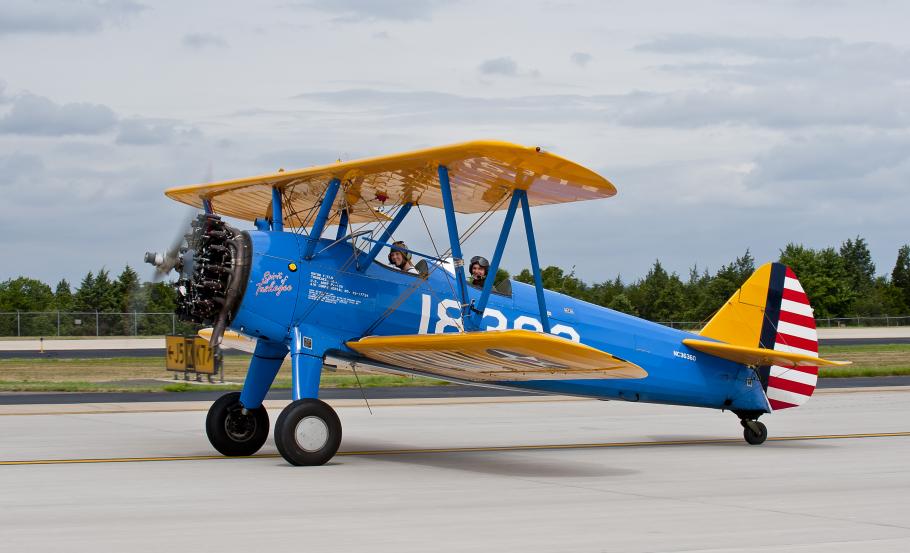During World War II, a group of young, enthusiastic and skilled African American men pressed the limits of flight and the boundaries of racial inequality by becoming Army Air Forces pilots. Most of these pilots trained at Moton Field in Tuskegee, Alabama. One of the most popular and beautiful plants of that region is a fiery red Crape Myrtle. Like the Tuskegee Airmen, whose characteristic red-tailed aircraft became their trademark, this Crape Myrtle was named for the city of Tuskegee. In an ongoing effort by Smithsonian Gardens to link ornamental horticulture to the many themes and exhibitions that are part of the National Air and Space Museum, this emblematic tree now adorns the grounds of the world's most visited air museum. Native to Asia, Crape Myrtles are known for their delicate yet robust blooms, thick canopies of glossy green leaves, vibrant fall color, and flaking bark which is a unique and attractive feature during the winter months. Large and heavy flowers explode from June to September making the Crape Myrtle one of the most popular and visible trees on the Smithsonian campus. The northernmost Plant Hardiness boundary for this tree is Zone 7a, extending from Baltimore through southern Illinois. Crape Myrtles are adaptable to many climates and are drought resistant, growing best in well-drained soils and full sun. Most of the Crape Myrtles on display at the Smithsonian, like the ‘Tuskegee,’ are cultivars selected from the United States National Arboretum’s renowned plant breeding program located in Washington, DC.
The ‘Tuskegee’ Crape Myrtle tree (Lagerstroemia x ‘Tuskegee’), planted in May 2012 by Smithsonian Gardens staff at a National Air and Space Museum community horticulture education seminar, is located about 200 feet west of the Museum’s south entrance near the access ramp. It may seem a small gesture, but planting a tree to remember one of the most significant groups of WW II pilots and the social legacy that they represent to our nation is anything but trivial.
Visitors can view artifacts from the Tuskegee Airmen in the Barron Hilton Pioneers of Flight gallery at the National Air and Space Museum and will also have an opportunity to view related exhibits at the National Museum of African American History and Culture when it opens on the National Mall near the Washington Monument in 2015. Included in the planned exhibits will be a PT-13 Stearman called the Spirit of Tuskegee flown in training by the Tuskegee Airmen at Moton Field during World War II. The Tuskegee Stearman is currently on display at the National Air and Space Museum's Udvar-Hazy Center located in Chantilly, Virginia.

